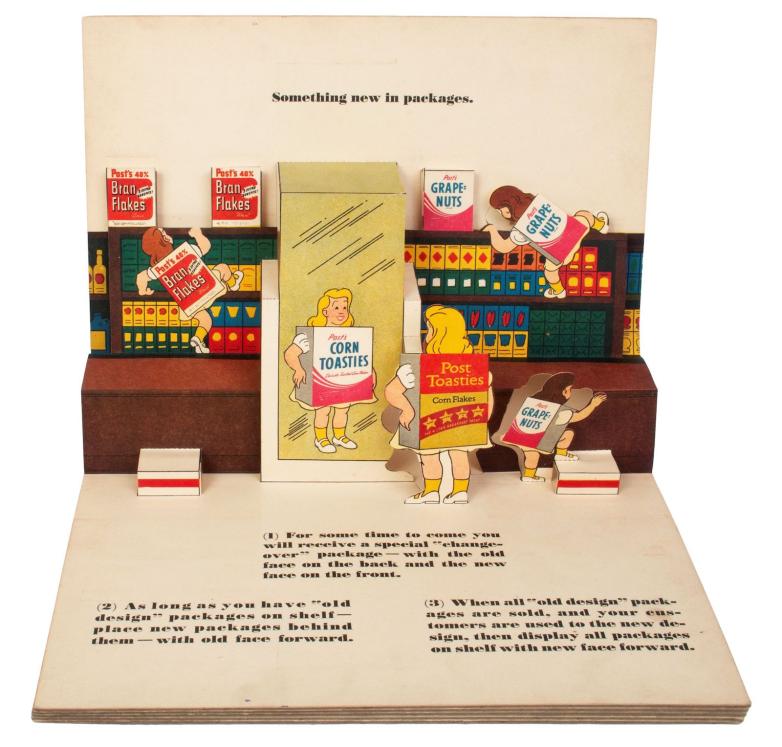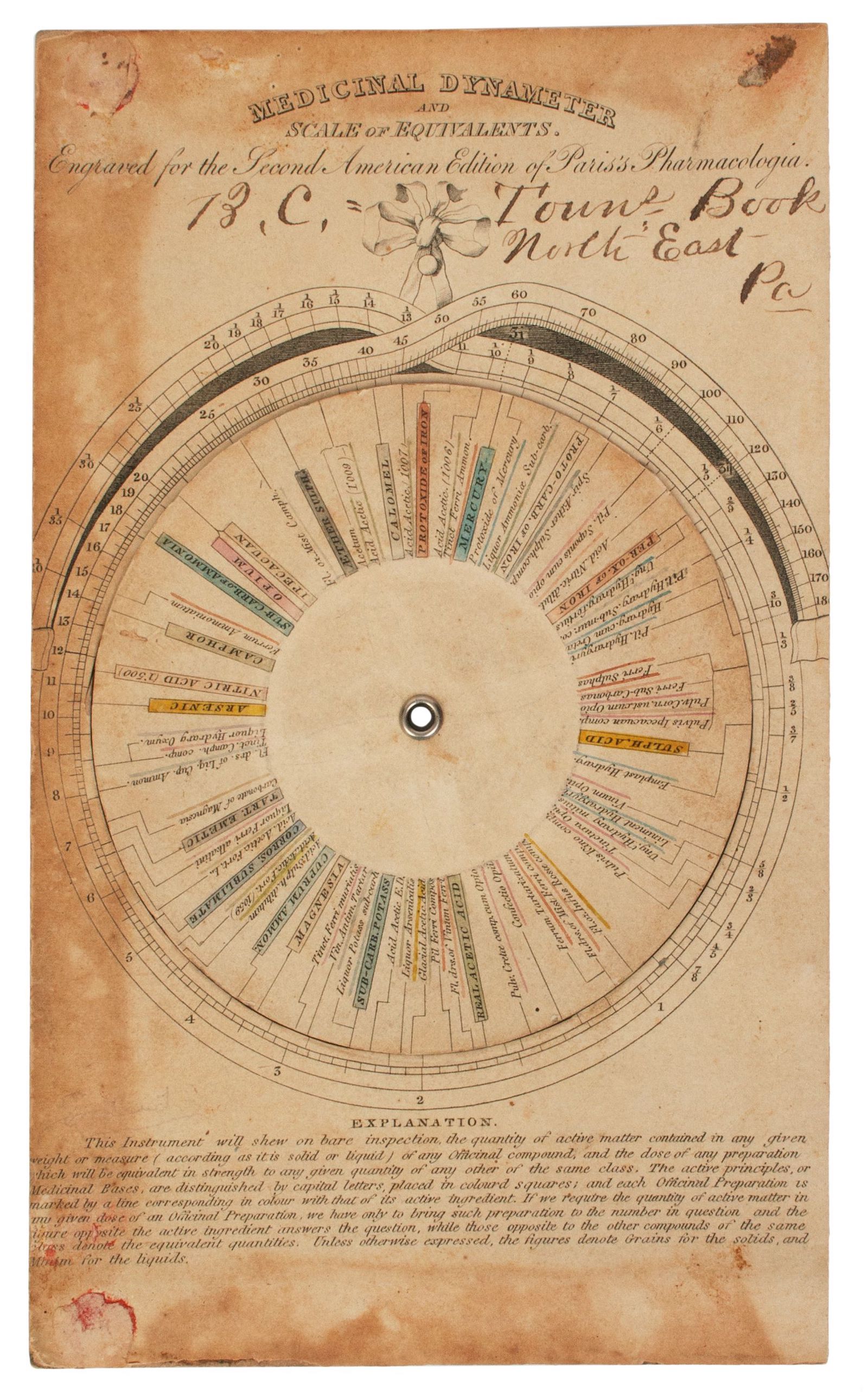Exhibition Highlights
The oldest object on view in Animated Advertising is a cardboard volvelle or movable dial, dating from 1824, used by doctors to calculate dosages of medicine. Often placed in the endpaper of textbooks, this version is from the second American edition of John Ayrton Paris’s Pharmacologia. Later volvelles on view include a Magic Christmas Gift Selector (ca. 1950), a prototype for a department store to help customers with holiday gift ideas, and Wonder Bread’s Guide to United States Warships (ca. 1940s), featuring ship names and international flag codes.
One of the more surprising objects on view is a postcard promoting Wanamaker’s new store in Philadelphia (ca. 1910), which instructs the recipient to “blow here,” into a hole over the address, to inflate a crepe paper replica of the building. Another one-of-a-kind design on view is the first ever pop-up postage stamp, commemorating 2012 Children’s Book Week in the Netherlands. Only to be used for mail within the country, the stamp is seven times thicker than a standard postage stamp and a pull-tab reveals a hidden animal.
Jan Pieńkowski’s Haunted House was one of the most successful pop-up books ever, selling one million copies and winning the 1980 Greenaway Medal. The book was featured as part of Intervisual Books’ annual report, promoting their success while demonstrating a sample of the company’s product. Creative food packaging inserts on view also feature pop-up elements, such as Russian candy company Red October Chocolate’s cartoon-style pop-up pigs and wolf (ca. 1957), and Stouffer’s French Bread Pizza Legends of Baseball series (1995), with a pop-up image of a leaping Yogi Berra catching a ball.
Collectible items for children also are on display, including Kellogg’s Funny Jungleland Moving Pictures (1932), a color triptych slice book that allows the reader to create fantastical animals by manipulating the illustrated flaps. By 1932, Kellogg’s had printed over 25 million copies in several iterations, available “while they last!” with the purchase of two packages of Corn Flakes at the grocer. The French company Phosphatine Falières advertised its fortified infant cereal with a series of colorful illustrated cards representing French provinces and colonies (ca. 1905), to be cut out and assembled with a pull-tab into a movable advertisement.





![Wanamaker Store, Philadelphia, Pa., [ca. 1910]. 3• x 5• x3•”.](/sites/default/files/media-images/2022-11/gc-aa-image-3a-wanamaker.jpg)
![Wanamaker Store, Philadelphia, Pa., [ca. 1910]. 3• x 5• x3•”.](/sites/default/files/media-images/2022-11/gc-aa-image-3b-wanamaker.jpg)

![Wonder Bread, The Guide to United States Warships, [ca.1940s]. 47/8 x 4•”.](/sites/default/files/media-images/2022-11/gc-aa-image-7-wonder-bread.jpg)
![Instant Maxwell House Coffee.vHistory of Our Presidents, Graphics International, LosvAngeles, Calif., [ca. 1963]. 10 pp.,v9• x 75/8”; with the printed mailer.](/sites/default/files/media-images/2022-11/gc-aa-image-9a-maxwell-presidents.jpg)
![Instant Maxwell House Coffee.vHistory of Our Presidents, Graphics International, LosvAngeles, Calif., [ca. 1963]. 10 pp.,v9• x 75/8”; with the printed mailer.](/sites/default/files/media-images/2022-11/gc-aa-image-9b-maxwell-presidents.jpg)












